Croatia’s architectural landscape tells the story of a nation at the crossroads of empires and influences. From Venetian palaces along the Adriatic coast to Habsburg elegance in the continental interior, the country’s buildings reflect centuries of cultural exchange and artistic innovation. While Dubrovnik often dominates travel itineraries, Croatia offers numerous lesser-known towns where architectural treasures await discovery on nearly every street corner.
Here is a list of 20 Croatian towns where exceptional architecture spans centuries of diverse influences and styles.
Dubrovnik

The ‘Pearl of the Adriatic’ features perhaps the most complete Renaissance planned city in Europe, enclosed by massive 13th-century stone walls stretching nearly 1.2 miles. The main pedestrian thoroughfare, Stradun, gleams with limestone worn smooth by centuries of footsteps between uniformly designed Baroque buildings reconstructed after a devastating 1667 earthquake.
Beyond the famous walls, the city’s architectural harmony extends to monasteries, palaces, and fountains that showcase the wealth and sophistication of this former maritime republic.
Split
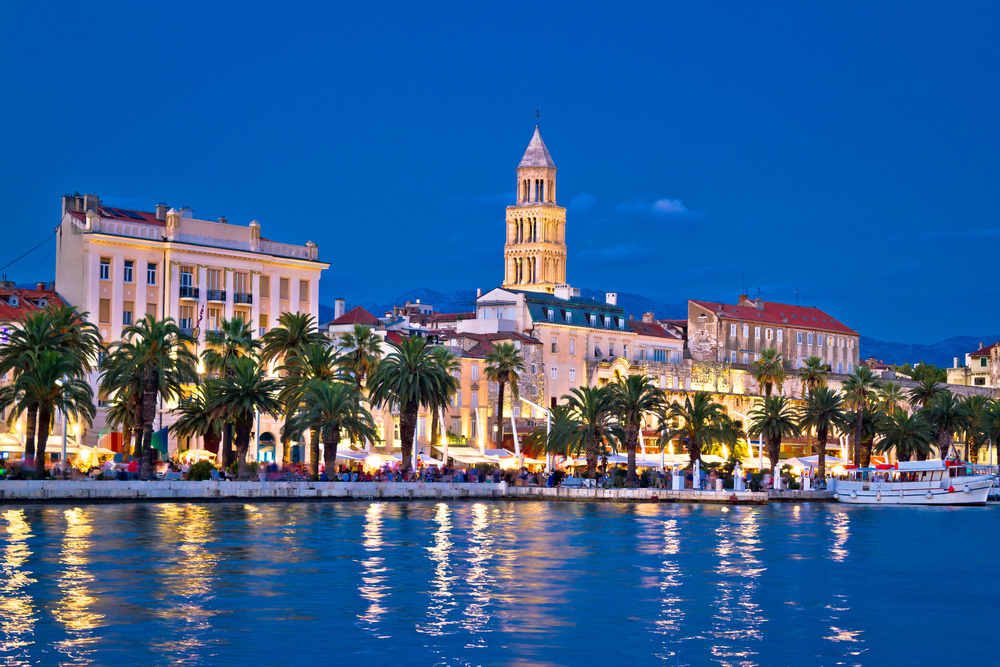
Centered around the astonishing Diocletian’s Palace, Split presents the rare opportunity to experience a living Roman imperial residence that evolved organically over 1,700 years. The 4th-century complex now houses apartments, shops, and restaurants within its ancient walls, creating a remarkable blend of ancient and modern urban life.
Medieval churches were built into former Roman temples, and Renaissance and Baroque palaces appeared in later centuries, creating an architectural timeline visible in a single panoramic view.
Like Travel Pug’s content? Follow us on MSN.
Zadar
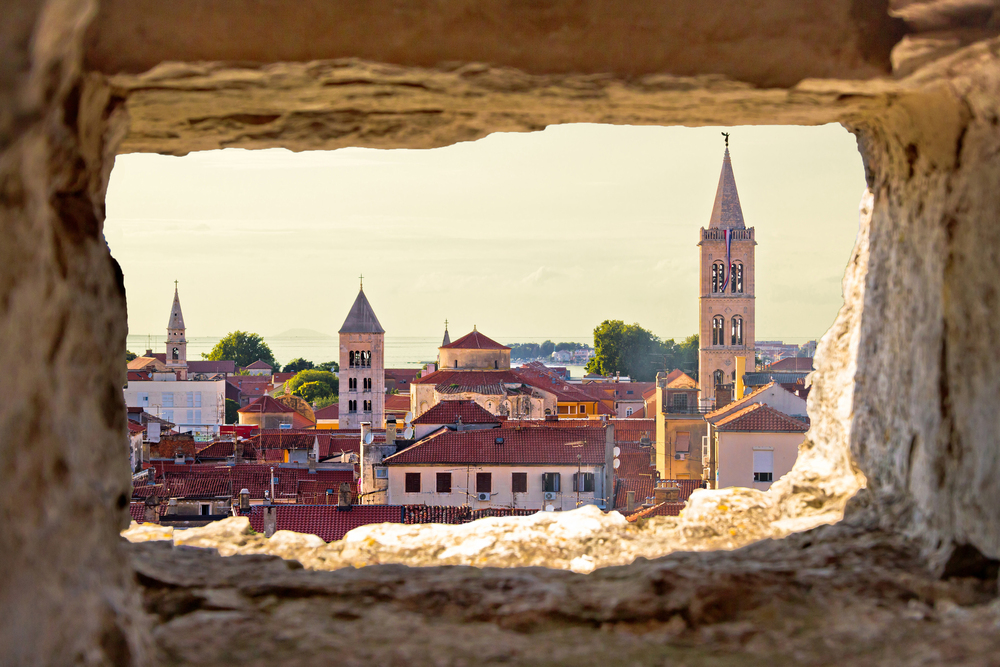
This coastal city showcases extraordinary architectural continuity, from the ancient Roman forum to innovative modern installations like the Sea Organ and Sun Salutation. The round 9th-century Church of St. Donat rises from Roman foundation stones, while the 12th-century Romanesque Cathedral of St. Anastasia dominates the skyline with its distinctive bell tower.
The juxtaposition of contemporary architectural innovations alongside ancient structures creates a uniquely harmonious urban landscape spanning two millennia.
Trogir
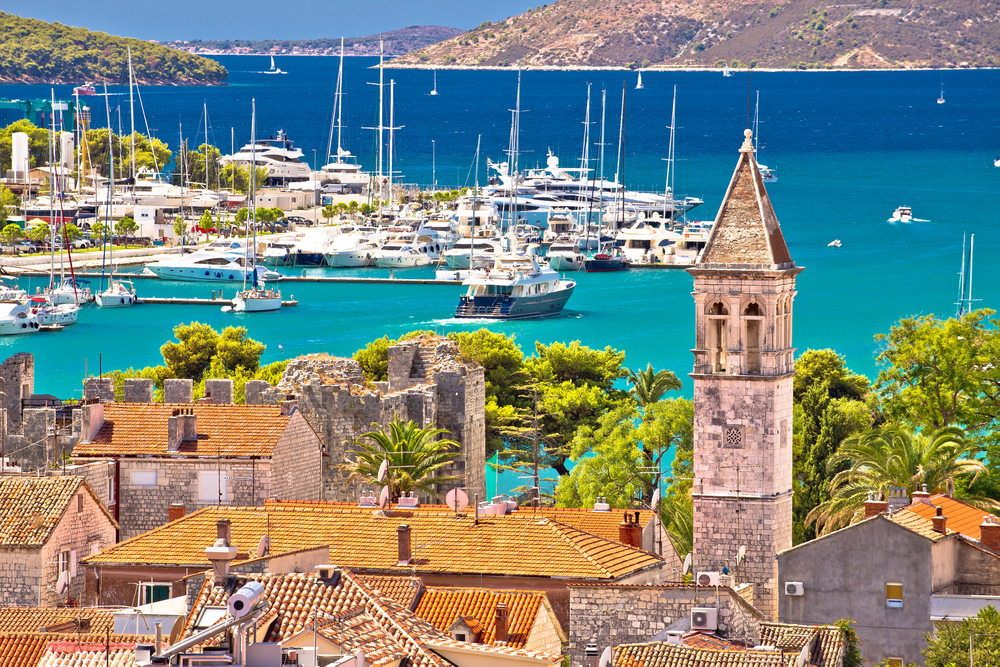
This small island town between the mainland and Čiovo Island packs remarkable architectural diversity into a compact medieval core. The UNESCO-protected center features the stunning 13th-century Trogir Cathedral with its renowned Radovan Portal, considered a masterpiece of Croatian medieval sculpture.
Venetian-Gothic palaces line narrow alleyways, while the Kamerlengo Fortress provides a perfectly preserved example of 15th-century military architecture designed to defend against Ottoman advances.
Šibenik
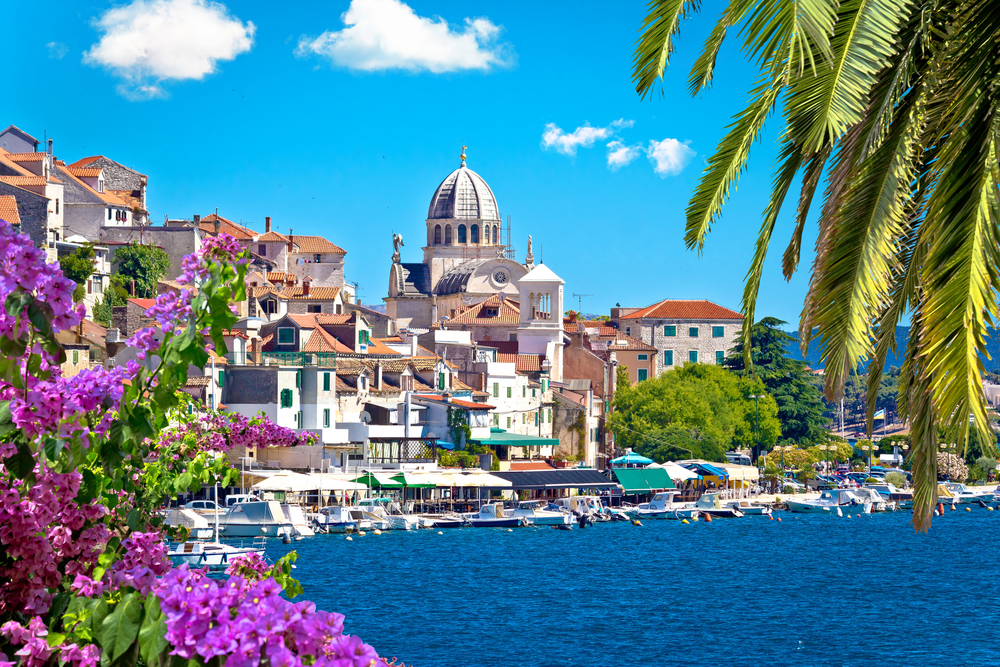
Unlike other coastal cities founded on Roman ruins, Šibenik emerged as a native Croatian settlement, giving its architecture a distinctive character. The crowning achievement is the UNESCO-listed Cathedral of St. James, built entirely of stone without mortar using unique construction techniques perfected by local master Juraj Dalmatinac.
The city rises in tiers from the harbor, with medieval churches and palaces connected by stone staircases, offering constantly changing perspectives of the Adriatic.
Like Travel Pug’s content? Follow us on MSN.
Pula
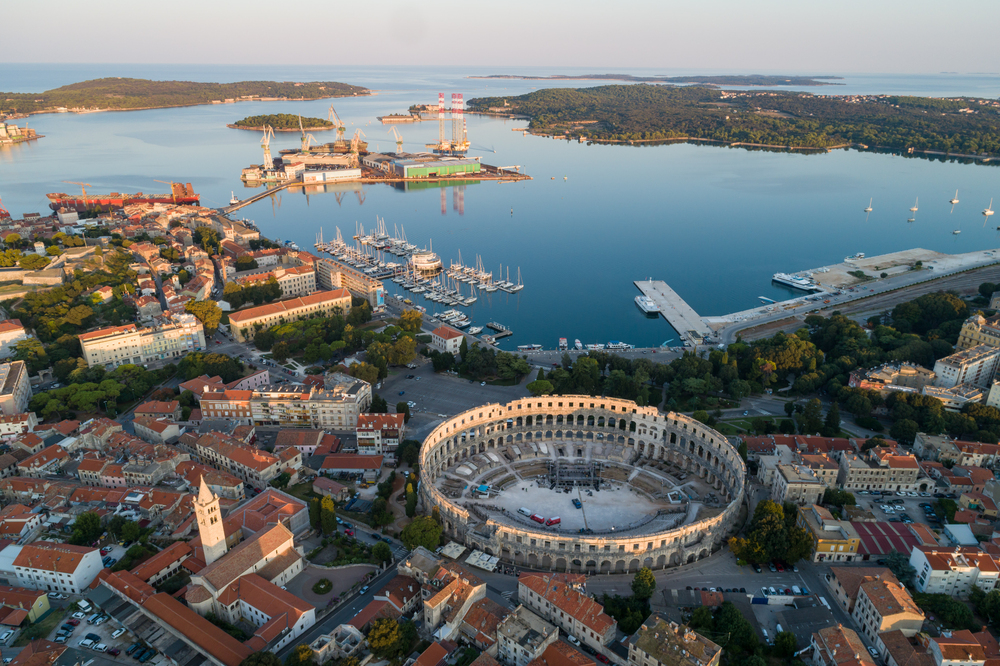
The imposing 1st-century Roman amphitheater dominates this Istrian city, standing as one of the best-preserved ancient arenas in the world. Beyond this iconic structure, Pula preserves numerous other Roman monuments, including the Temple of Augustus, the Arch of the Sergii, and an intact Roman floor mosaic.
Later architectural layers include Byzantine, Venetian, and Austro-Hungarian elements, with the Habsburg influence particularly evident in the elegant military buildings surrounding the harbor.
Rovinj
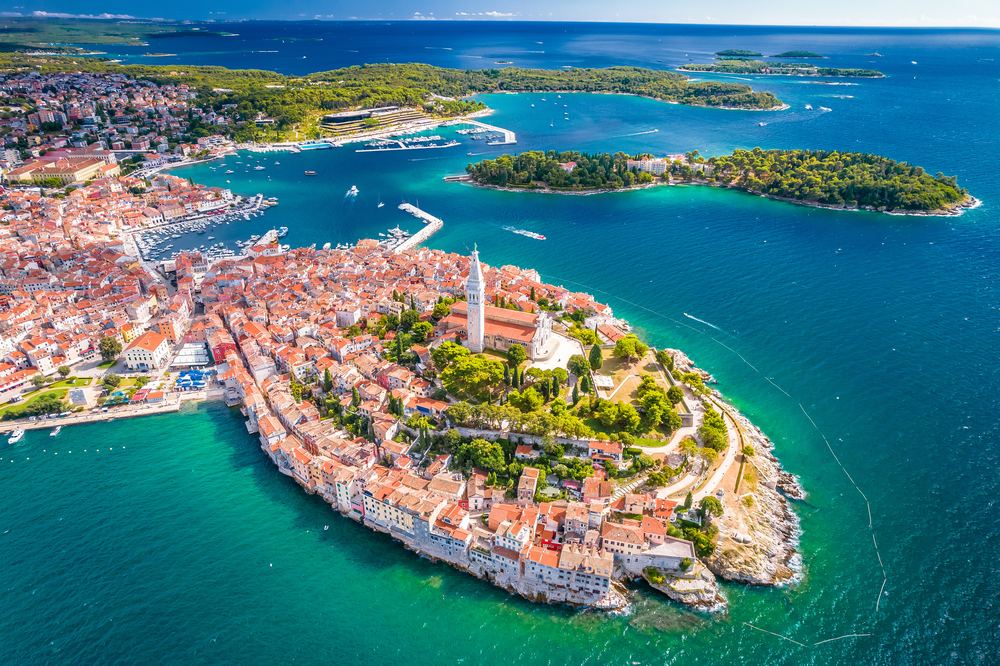
Rising dramatically from the Adriatic on a former island now connected to mainland Istria, Rovinj presents a perfect vision of Venetian architectural influence. The pastel-colored houses press tightly together as they climb toward the hilltop St. Euphemia Church, whose 17th-century bell tower is modeled after that of St. Mark’s in Venice.
The narrow streets follow medieval patterns, occasionally opening to small squares where Baroque and Renaissance details adorn doorways and window frames of former merchant homes.
Poreč
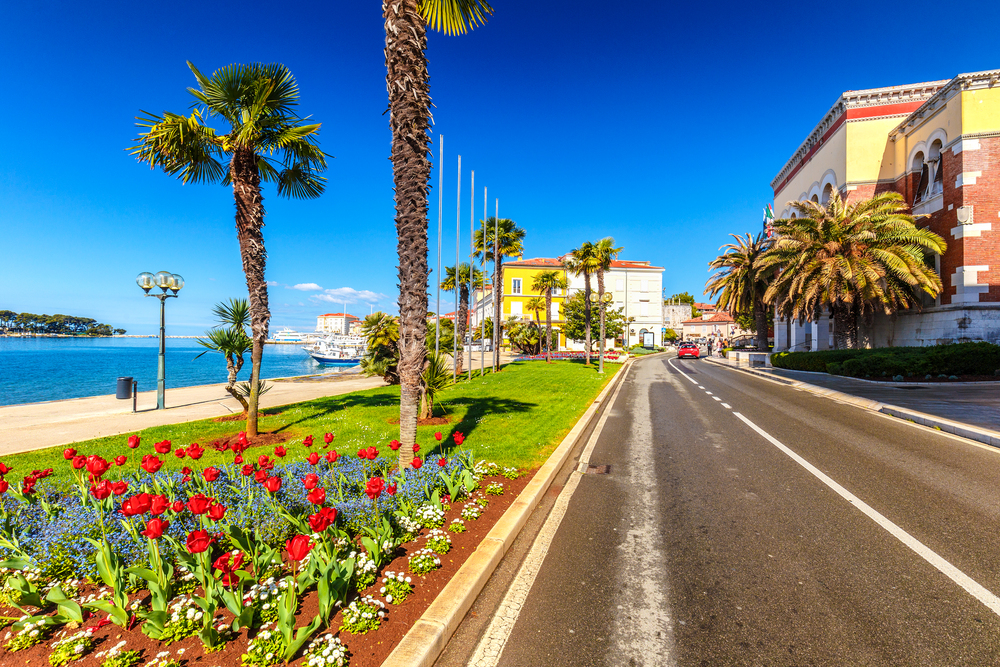
The 6th-century Euphrasian Basilica stands as Croatia’s finest example of Byzantine architecture, with spectacular gold mosaics that rival those of Ravenna. The basilica anchors a remarkably preserved religious complex, including an atrium, baptistery, and episcopal palace, which together earned UNESCO World Heritage status.
Beyond the religious center, the town’s grid pattern preserves its ancient Roman layout while incorporating Gothic, Renaissance, and Baroque buildings along straight streets that have remained unchanged for millennia.
Like Travel Pug’s content? Follow us on MSN.
Hvar Town
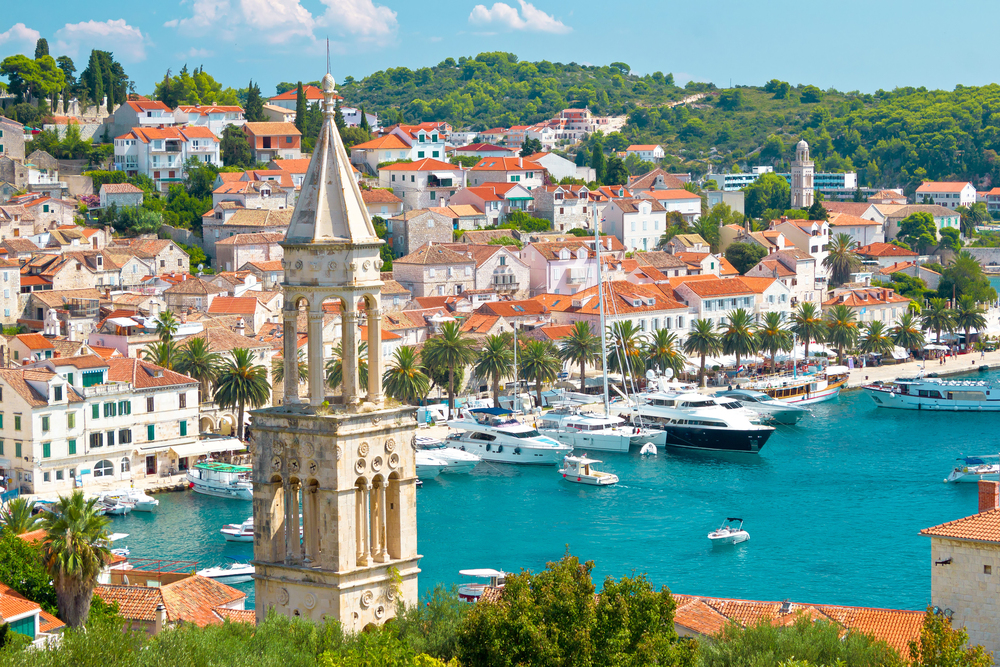
This island hub showcases Venetian architectural influence at its most sophisticated, centered around one of the Adriatic’s largest public squares. The Arsenal building, with its historic theater, the Cathedral of St. Stephen, and the elegant Loggia, creates a harmonious ensemble of Late Renaissance architectural principles.
The surrounding residences feature distinctive carved stone balconies and intricate portal designs that reflect the wealth derived from the island’s strategic maritime position.
Korčula Town
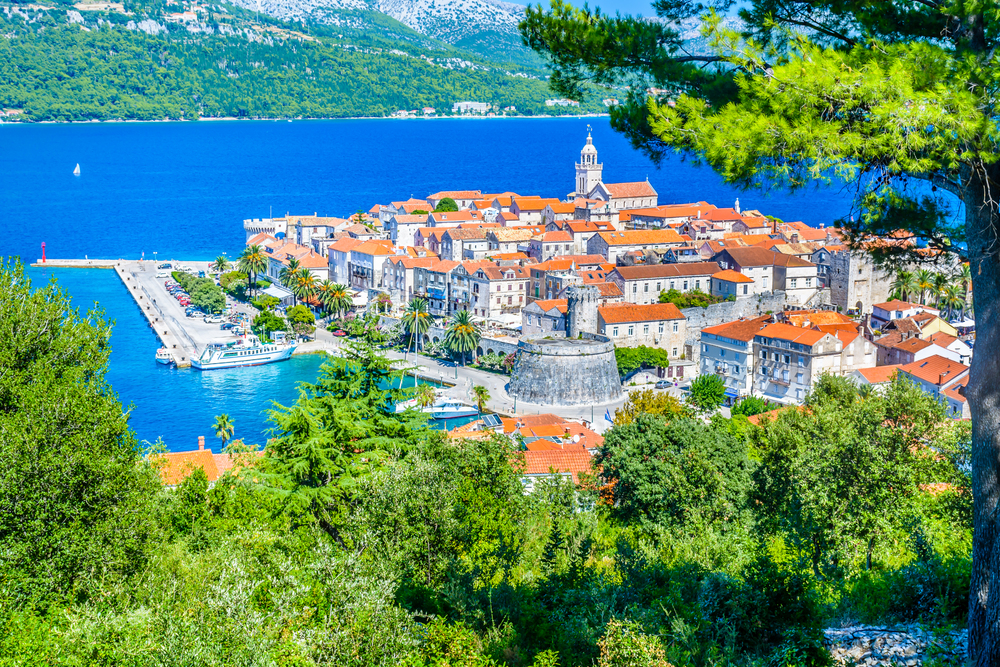
Often called ‘Little Dubrovnik,’ this fortified island town features a unique herringbone street pattern designed to reduce wind exposure while maximizing air circulation. The 15th-century St. Mark’s Cathedral rises at the highest point, showcasing the work of local master builders, including the remarkable stone carvings by Marko Andrijić.
The defensive towers and walls incorporate innovative architectural solutions for repelling naval attacks while accommodating a sophisticated urban lifestyle within their confines.
Varaždin

The former capital of Croatia preserves the finest collection of Baroque architecture in the country, earning it the nickname ‘Little Vienna.’ Palaces built by noble families line the streets surrounding the medieval core and its impressive fortress. The city cemetery, designed by Herman Haller in the early 20th century, transforms burial grounds into architectural garden art with precisely trimmed hedges formed into outdoor rooms.
The annual Špancirfest festival temporarily transforms historic buildings with contemporary lighting and installations.
Like Travel Pug’s content? Follow us on MSN.
Motovun

Perched dramatically atop a 909-foot hill in central Istria, this perfectly preserved medieval town offers a textbook example of Venetian defensive architecture. The massive walls surround a settlement that rises in concentric circles to the Renaissance-era church and campanile at its peak.
The main square features a unique covered cistern and loggia, both demonstrating the practical architectural adaptations needed for hilltop living before modern water systems existed.
Opatija
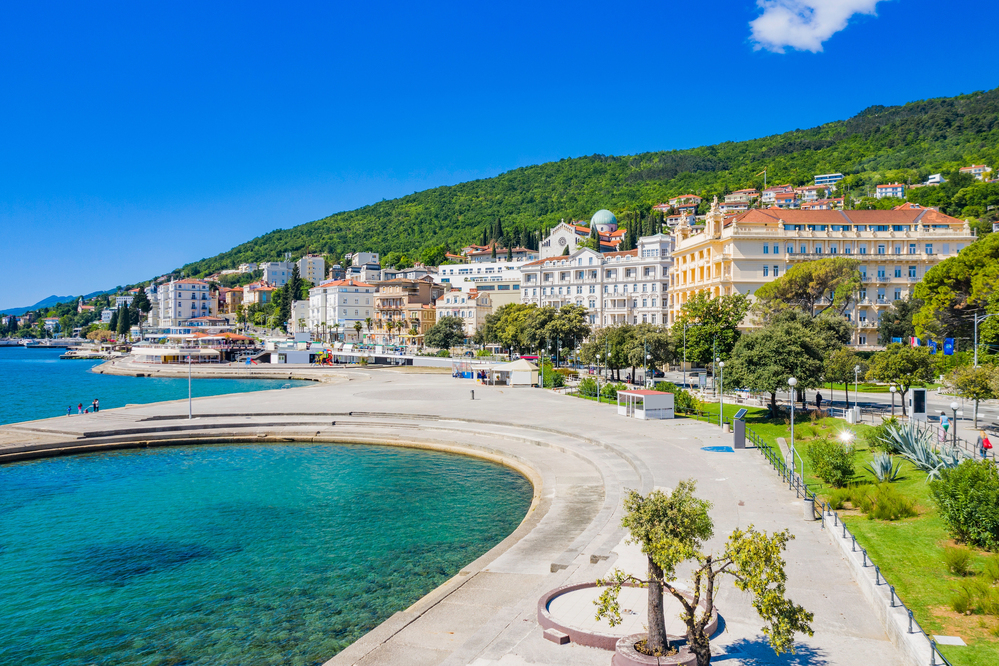
This elegant resort town showcases the finest collection of Austro-Hungarian vacation architecture along the Croatian coast. Grand hotels and sumptuous villas from the late 19th century line the 7.5-mile seaside promenade known as the Lungomare.
The iconic Villa Angiolina pioneered the Habsburg Riviera style with its neoclassical elegance set amid meticulously maintained gardens filled with exotic species. The Church of St. James incorporates elements of early Christian basilica design into a structure built with modern materials.
Nin
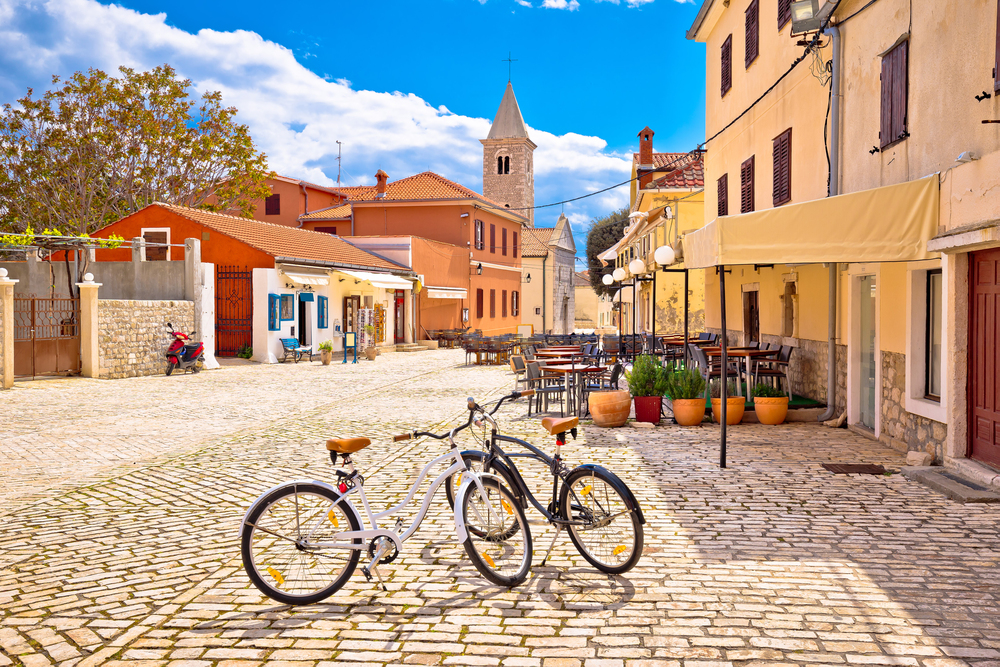
This small town near Zadar centers around the remarkable pre-Romanesque Church of the Holy Cross, dating from the 9th century and sometimes called ‘the smallest cathedral in the world.’ The compact royal city occupies a small island connected to the mainland by two stone bridges, combining Roman street patterns with medieval fortifications.
The architectural simplicity of the early Croatian buildings stands in stark contrast to the more ornate styles that would develop in later centuries along the coast.
Like Travel Pug’s content? Follow us on MSN.
Samobor
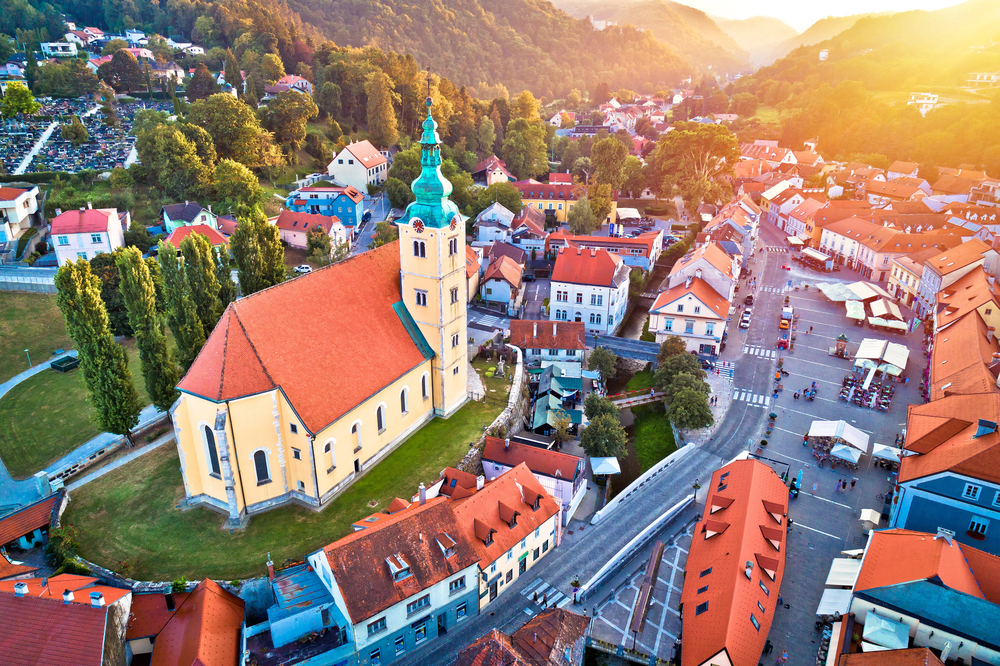
This charming continental town near Zagreb preserves a distinctive mix of Central European architectural styles centered around a picturesque main square. The 19th-century buildings display elegant Biedermeier details alongside modest Baroque townhouses that reflect the prosperity of local craftsmen and merchants.
The ruins of the 13th-century castle overlook the town, while numerous chapels dot the surrounding hillsides in a pattern typical of northern Croatian settlement.
Vodnjan
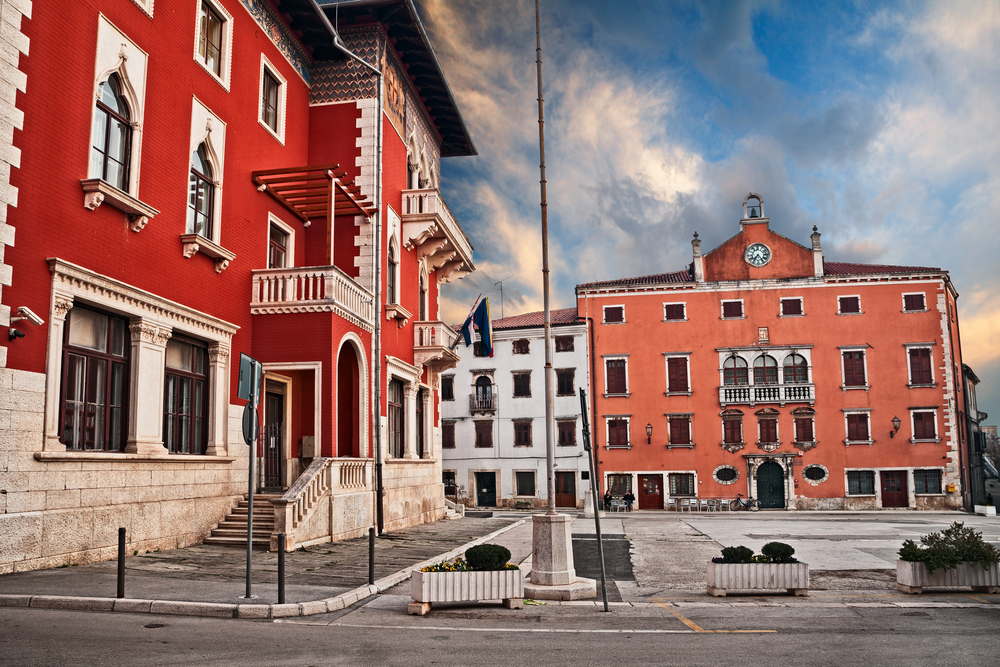
This unassuming Istrian town houses an architectural marvel in St. Blaise Church, whose 207-foot bell tower stands as the tallest in Istria. The urban layout preserves a distinctive medieval pattern with narrow passages connecting larger streets and opening suddenly into small squares.
The town houses feature characteristic Istrian stone construction with distinctive chimney designs and carved door lintels displaying family symbols and construction dates spanning several centuries.
Rab Town
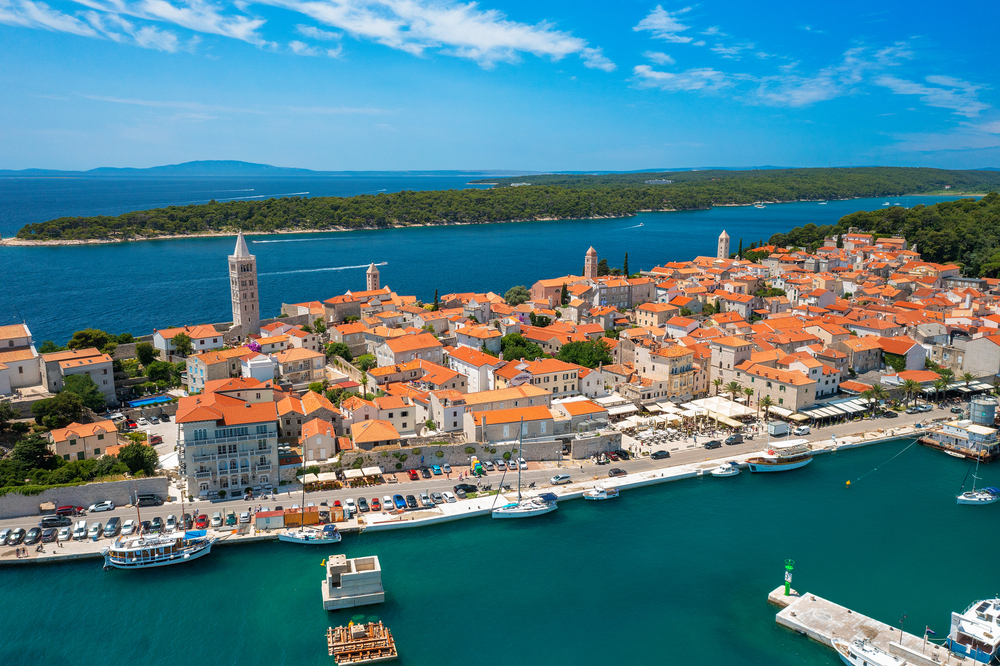
The ‘city of four campaniles’ presents a dramatic skyline of bell towers rising above Venetian-Gothic palaces and churches on a narrow peninsula. The architectural highlight remains the Cathedral of the Assumption with its distinctive bell tower combining Romanesque and early Gothic elements.
The main street features perfectly preserved noble palaces with intricately carved balconies and window frames demonstrating the wealth of this strategic maritime community during Venetian rule.
Like Travel Pug’s content? Follow us on MSN.
Karlovac
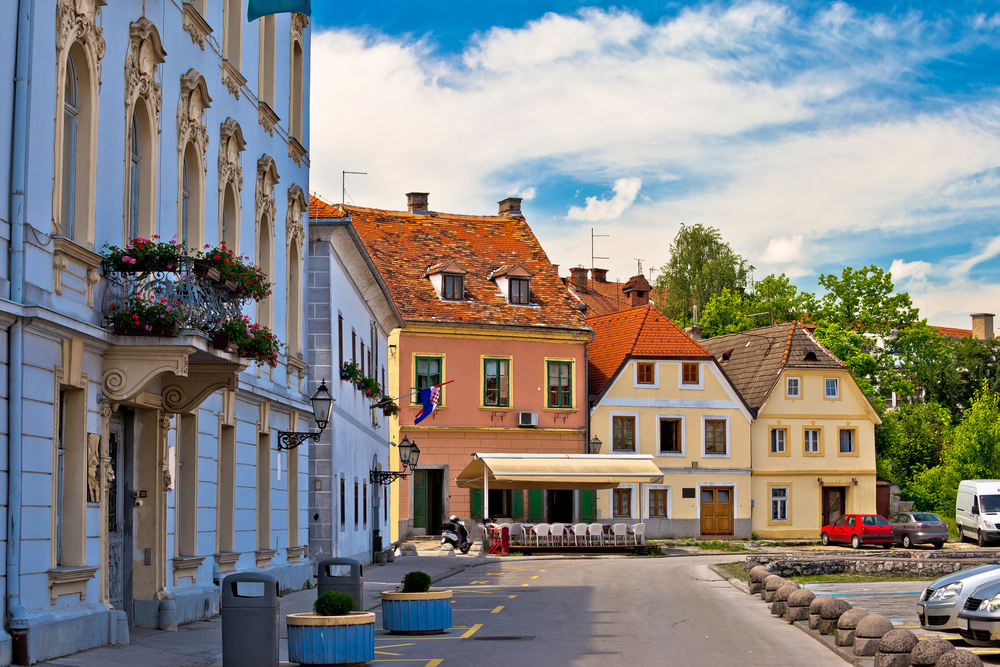
This Renaissance ‘ideal city’ was constructed from scratch in the 16th century as a defensive stronghold against Ottoman expansion. The distinctive star-shaped urban plan with six points represents the pinnacle of Renaissance military architectural theory as developed by Italian engineers.
Though much of the original fortress was later dismantled, the street grid preserves the geometric precision of the original design while 19th-century buildings reflect later Austro-Hungarian architectural influences.
Ston
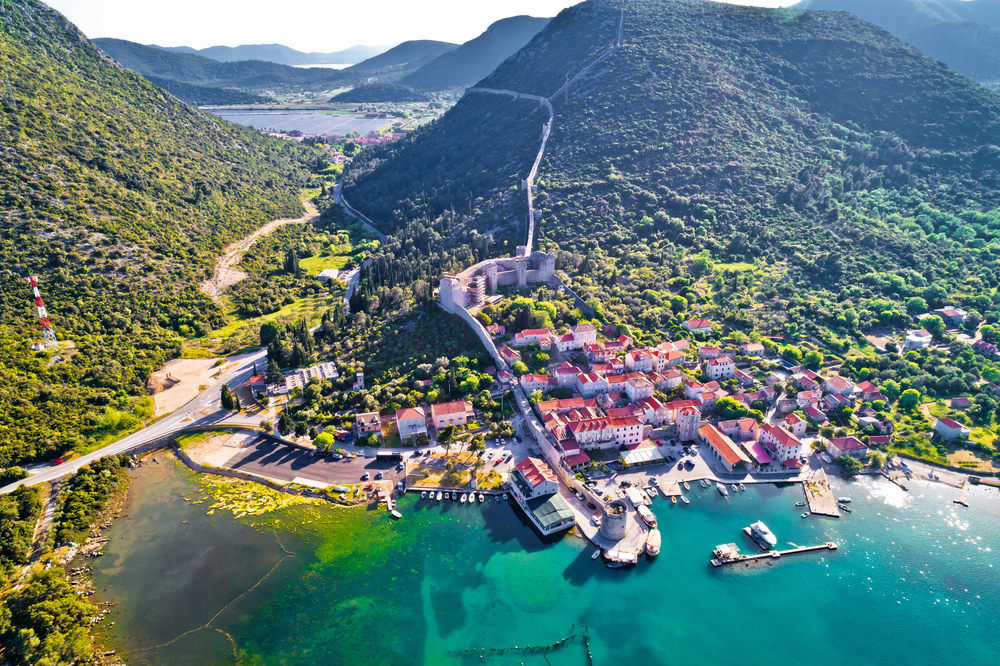
This small town features what was once the longest defensive wall system in Europe after the Great Wall of China, stretching over 3.5 miles to protect valuable salt pans. The 14th-century planned settlement displays perfectly preserved medieval urban design principles with grid-pattern streets and minimal ornamentation.
The substantial fortifications with their marked Dubrovnik influence include forty towers and five fortresses designed to protect what was once one of the Republic’s most valuable commodities.
Ilok
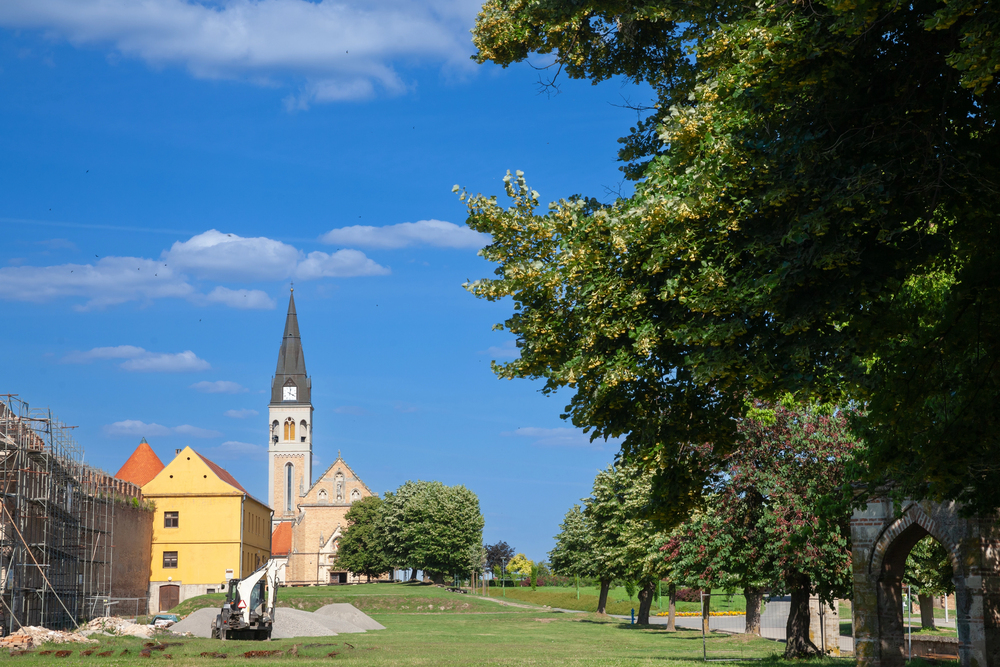
Croatia’s easternmost town preserves remarkable examples of medieval and Renaissance architecture, including the imposing 15th-century Odescalchi Castle that dominates the Danube riverfront. The castle combines Gothic and Renaissance elements while incorporating defensive innovations designed to resist Ottoman artillery advances.
The old wine cellars beneath the castle complex represent a distinctive form of utilitarian architecture designed specifically for the temperature control needed for wine production in the continental climate.
Like Travel Pug’s content? Follow us on MSN.
Layers of Time in Stone
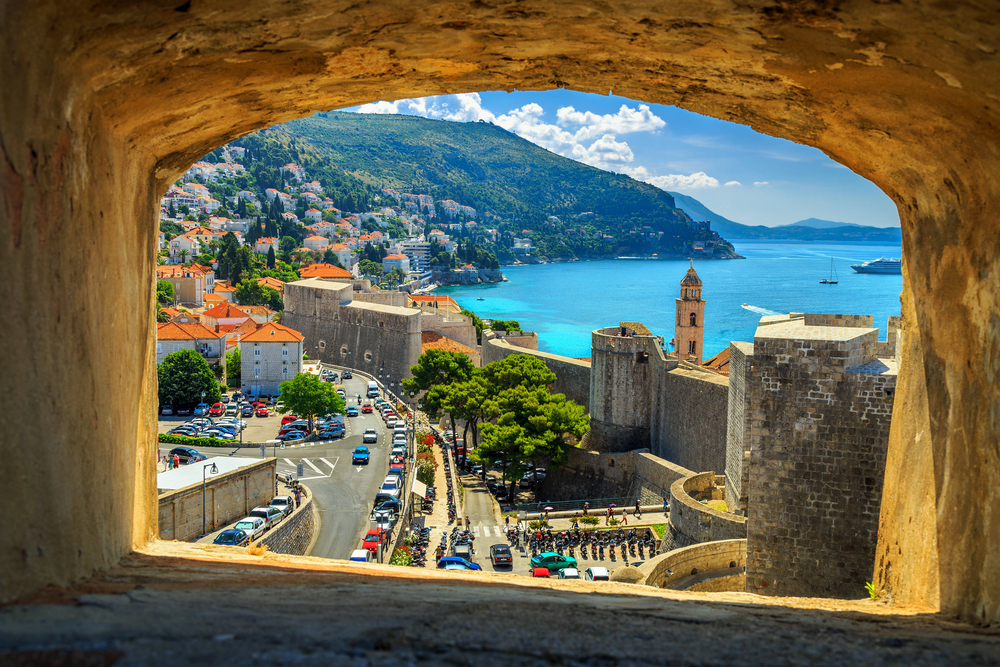
Croatia’s architectural heritage represents far more than beautiful buildings—it tells the story of a nation positioned between competing empires, religions, and cultural spheres. Each town preserves a unique architectural dialogue between Venetian, Ottoman, Habsburg, Byzantine, and native Croatian influences that played out over centuries.
The remarkable preservation of these built environments allows visitors to experience multiple historical periods simultaneously, creating a living museum of European architectural development. Beyond their aesthetic appeal, these towns demonstrate how successive generations adapted existing structures to changing needs while respecting the inherited urban fabric, creating places of extraordinary harmony and character.
More from Travel Pug

- Cities Growing so Fast You Won’t Recognize Them in 10 Years
- 13 Destinations Where Tourists Regularly Regret Their Trip
- 16 U.S. Cities That Are Quietly Becoming Travel Hotspots
- Where to Travel If You Love Long Bus Rides and Daydreams
- 20 Cities Perfect for Solo Travelers Who Crave Adventure & Culture
Like Travel Pug’s content? Follow us on MSN.
